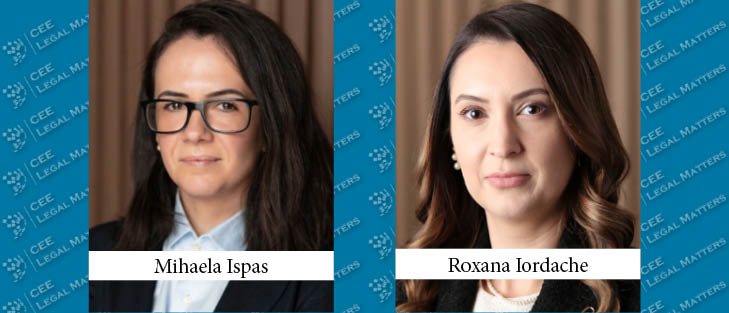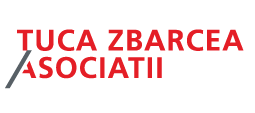REITs (Real Estate Investment Trusts), the investment structure focused on real estate assets and related revenues generated by them has been implemented and used around the world due to the advantages brought to its investors.
During the last months of 2023 and the first part of this year, in an attempt to align the Romanian real estate market with the European and global standards, a legislative project was initiated in order to formalise and regulate this type of investment structure (PL-x no. 433/2024) (hereinafter the “Draft Law”). In September 2024, the Senate passed the project with significant changes compared to its original form. Currently, the Draft Law is on the table of the Chamber of Deputies (as the decision-making forum), being sent to the relevant committees for approval and is expected to be adopted by the end of this year.
Although REITs represent, to a certain extent, a new concept for the Romanian market, for which we finally have an advanced draft of legal act, in recent years several companies have been established or reorganised under a structure similar to a REIT (namely, not only as joint-stock companies listed on the Romanian stock exchange market, but also as holding companies established with the sole purpose of managing various real estate investments for a selected group of investors).
In this article, we aim to highlight the main aspects that are proposed to be regulated by the Draft Law, outlining both the “upsides” and the “downsides” of the legal initiative.
(A) Types of Romanian “REITs”
The Draft Law refers to the establishment of two types of “REITs”: (i) real estate investment companies (in Romanian, “societăți pentru investiții imobiliare” and, referred to herein as “SIIs”) and (ii) real estate profile companies (in Romanian, “societăți cu profil imobiliar” and, referred to herein as “SPIs”).
The two types of vehicles are interdependent, since at least 95% of the SPIs’ share capital must be held by SIIs.
(B) Requirements to be met
As main features of SIIs, we mention the following: (i) joint-stock companies having their registered office in Romania, (ii) shares traded on Romanian regulated markets (or which shall be traded on such markets within 18 (eighteen) months as of the entry into force of the Draft Law), (iii) specific real estate activities to be carried out (as detailed in section (E) below), (iv) at least 75% of their revenues must be derived from specific real estate activities or dividends from other SIIs/SPIs, (v) distribution of at least 90% of the profit to their shareholders, as dividends, and (vi) not being incorporated as micro-enterprises.
From a corporate perspective, Romanian “REITs” do not appear to be set-up under a new corporate structure (i.e., other than those already regulated by Law no. 31/1990 on companies). However, given the above, it is quite clear that the Draft Law aims at ensuring transparency and implementing corporate governance rules specific to listed companies.
Although SPIs seem to have more relaxed conditions to meet in terms of corporate governance, this is offset by somewhat limited investment opportunities, as detailed in section (E) below. Thus, this type of companies: (i) can be established either as limited liability companies company or as joint-stock companies (no stock exchange listing being required), (ii) at least 95% of their share capital must be held by SIIs (in order to benefit from the favourable tax regime), (iii) may only perform certain real estate activities (as detailed in section (E) below), and (iv) must distribute the entire profit to their shareholders.
Although the obligation of these companies to distribute the entire profit to their shareholders may seem like a “good deal” (especially for private and non-institutional investors), we note that their investment resources will be quite limited (e.g., acquisition of shares by interested investors or accessing loans), considering that no part of the profit can be reinvested.
(C) Participation of public entities
In order to instil confidence in this new investment “tool”, the Draft Law provides that public entities may also establish SIIs (but not SPIs), having a quota of no less than 25% and no more than 75% of the SII’s share capital. Although the Draft Law refers only to the establishment of SIIs by public entities, we do not see any prohibition on the latter acquiring shares in already incorporated SIIs, subject of course to the abovementioned participation quota requirements.
(D) Financing
Both SIIs and SPIs may contract loans from third parties, up to a value equal to 65% of their assets, securing such loans exclusively with the assets allocated to the financed project.
Although this requirement aims at limiting the indebtedness and related financial risks of both SIIs and SPIs, in practice, the financing sources available to these companies may be rather limited since no other collaterals can be brought to secure the loans.
(E) Investment directions
According to the Draft Law, the activity of Romanian “REITs” will be mainly focused on:
- sale and purchase of real estate assets (since no definition of “real estate assets” is provided in the Draft Law, it should be further clarified whether: (1) Romanian “REITs” may invest in both ongoing and completed projects, and (2) whether renewable energy projects, which are very popular these days, may also be pursued);
- lease, concession or any other form of transfer of the right of use over owned real estate, for periods of not less than 10 years (it should be noted that although the Draft Law does not refer to superficies rights, there should be no reason to exclude from the interpretation the transfer of such right, which is crucial for the development of agricultural or renewable energy projects);
- development, exploitation, operation and/or management of real estate assets and projects, including recreational centres, social facilities, commercial and service centres (although not expressly provided for in the Draft Law, there should be no reason for logistic centres to be excluded);
- real estate assets related to agricultural and forestry projects, necessary for production or exploitation.
In addition to the above, SIIs may also acquire participations in (1) other SIIs, up to a 10% quota of their share capital, and (2) SPIs, in which the SIIs must hold at least 95% of the share capital.
As regards SPIs, it is unclear from the Draft Law whether their investments should follow the above directions or whether they are subject to other restrictions. Although the main investment lines seem to be the same (e.g., sale and purchase of real estate assets, exploitation, management and/or development of real estate projects and leasing of own real estate assets), on the one hand, they do not seem to completely overlap with the investment opportunities described above for SIIs (e.g., agricultural and forestry projects seem to be missing), and on the other hand, the related investment requirements appear to be more flexible (e.g., no minimum time period is provided in case of leasing).
As additional security measures for investors, the Draft Law provides for an annual valuation of the real estate assets of the companies as well as conclusion of property risk and business interruption insurance policies as mandatory requirements.
(F) Tax treatment
In order to enhance investments in the real estate market, the Draft Law provides for a favourable tax treatment for both types of Romanian “REITs”. As such, revenues obtained from the sale of real estate assets, lease agreements, asset management and maintenance, dividends received from other SIIs or SPIs or from the sale of shares held in such companies, as well as the interest obtained from loans granted to them, are excluded from taxation.
In order to benefit from this advantageous tax regime, the companies must submit to the competent tax authority, every 6 (six) months, an affidavit confirming the fulfilment of the legal conditions provided for in the Draft Law, subject to the payment of the corporate income tax due for the last 6 (six) months as of the date on which the company ceased to fulfil all the requirements.
Thus, the Draft Law sets a “one-tier” taxation regime, applicable only to the investors (who will pay the relevant tax due on dividend income) and not to the investment company itself.
In what concerns the obligation of SIIs and SPIs to distribute dividends, the Draft Law does not also refer to the payment of such dividends to shareholders. Although this aspect will be decided by the general meeting of shareholders, the postponement of such payment for a long period of time may have a “snowball” effect, determining the increase of the company’s indebtedness towards the shareholders and thus negatively affecting the financial capacity of the investment company.
(G) Objectives envisaged
The Draft Law’s immediate and main objective is to contribute to the economic growth of the Romanian real estate market by attracting new investors, especially foreign and/or institutional ones. Also, private investors should have a good opportunity to access a diversity of investment portfolios, by indirectly holding “real estate” investments, with lower costs and liabilities than direct ones (e.g., maintenance, management and operation of the assets is no longer on the investor’s shoulders), ensuring them a stable and recurring passive income.
Moreover, it is praiseworthy the fact that the Draft Law envisages a favourable tax regime applicable for investment companies, thus enabling the real estate market to access new financing sources.
***
In view of the above, it is clear that the Draft Law intends to provide new investment opportunities in the real estate market in Romania by regulating “REITs”, similar to other countries that have already successfully implemented this structure. As such, we are looking forward with interest to the final version of the Draft Law being adopted, the challenges it will bring and how it will be accessed by investors, especially individuals, given the recent concerns in the residential market in Romania.
By Mihaela Ispas, Counsel, and Roxana Iordache, Senior Associate, Filip & Company




